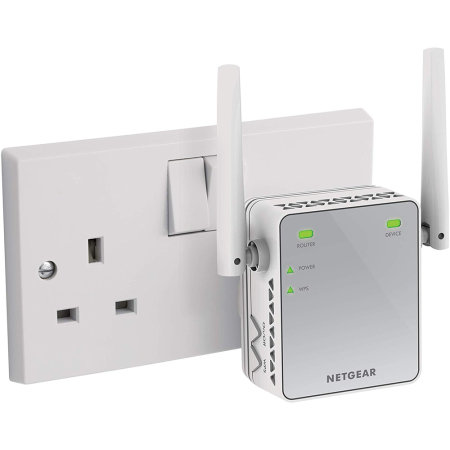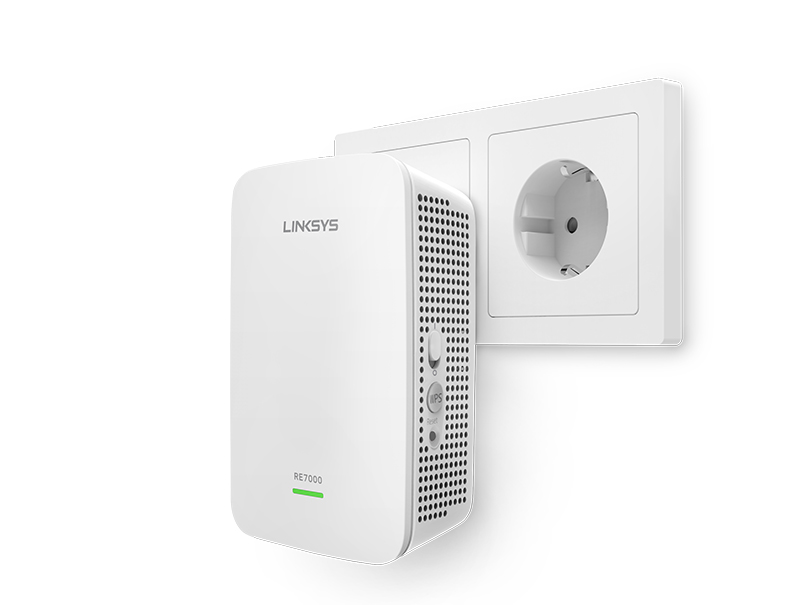A WiFi extender is handy for people that live in larger homes. The answer to the question “Can I plug an ethernet cable into a WiFi extender?” is “Yes.” You can plug an ethernet cable into a WiFi extender.
There are a few reasons to get a WiFi extender, and there are a couple of reasons to plug an ethernet cable into a WiFi extender. But, first, we need to understand what a WiFi extender is, and how it works.
CONTENTS
What Is a WiFi Extender?
It’s a device that takes the signal our WiFi router emits, and it extends it, as the name suggests. However, an extender takes the existing signal, uses it for internet access, and establishes a new wireless network.

We need to plug it in and set it up properly before it can work. Essentially, if the name of your current wireless network is “Home_network,” the extender should emit another network that’s named “Home_network_ext.”
When we install a WiFi extender, we get more wireless coverage across the house, and we get a more reliable wireless signal.
Reasons to Get a WiFi Extender
Well, the name says it all, if you need an extension of your wireless signal, you’ll get a WiFi extender. Nevertheless, let’s cover the basic situations in which you may need to install a WiFi extender in your home:
- WiFi outside: When your router is in the living room, but you like to enjoy your free time in the backyard, you can get a WiFi extender, and put it in the room that’s closest to your backyard.
- WiFi everywhere: The entire house has WiFi, but there’s no WiFi in the garage, or there’s no WiFi in one bedroom on the second floor of your home. It’s time to get a WiFi extender or an alternative solution.
- Fast WiFi: If you have multiple extenders that support the wireless speed of your router and the internet speed of your ISP (Internet Service Provider), you’ll have a fast wireless connection across the home.
Reasons to Plug An Ethernet Cable Into a WiFi Extender
When we think of a wired connection, we immediately think of a more reliable connection than that of a wireless network. But, when it comes to plugging an ethernet cable into a WiFi extender, we get the combination of wired and wireless. So, the only two reasons to do it are:
- Ethernet backhaul: Connecting your WiFi extender to the router via ethernet cable provides a much more reliable connection when you connect to the WiFi that the extender is emitting.
A wireless extender picking up a wireless signal from your router can get glitchy. Functionality largely depends on the objects between the extender and the router, and if there’s any frequency interference.
- Wired connection: If you’re looking to connect your device to the WiFi extender using an ethernet cable to improve your internet speed or connection, there’s no point. Connecting these two will improve the connection from your device to the extender.
However, the extender is still connected to the router using a wireless connection. So, the speed and reliability will depend on the distance between the extender and the router, and the interference and concrete objects in between.
Setting Up a WiFi Extender
There are many brands of WiFi extenders on the market, so the setup will depend on whether the brand has an app or not. Nevertheless, it shouldn’t be very difficult. So, what we need to do is plug the extender into the outlet and connect to the wireless network it emits.

Type in the IP address of the extender into the address bar of your browser. It’s usually 192.168.1.1. The user manual for the extender will contain the login credentials. You’ll be prompted to go through the setup.
You can enter the same WiFi settings you have on your router to make it work like it’s the same network. So, enter the same SSID (Service Set Identifier), i.e. network name, and the password. This way your devices keep connecting to the network no matter where you are. Finally, click Apply/Save.
Alternatives to WiFi Extenders
There are good alternatives and bad alternatives to WiFi extenders. A better alternative is a mesh network. An alternative that requires more work but it’s cheaper than a mesh network is installing more routers.
Mesh Network
It’s different from an extender because the entire network works based on the signal of the primary router. The mesh network contains the main node, i.e. the primary router, and satellites, other nodes that are distributed throughout the home.
The nodes communicate with each other simultaneously, and you get the same network everywhere. There’s no need to rename every node separately, and the nodes don’t have different IP addresses. They’re just satellites emitting the same network.
More Than One Router
Installing more than one router is an affordable solution because we usually have an old router lying around somewhere in the house, and we can use it for our benefit. However, the setup is quite tricky here.
Recommended reading:
- Netgear Extender Red Light: How to Fix It?
- What is RG6 Coaxial Cable Used For? A Detailed Guide to RG6 Coaxial Cables
- How to Connect Wi-Fi Extender to Smart TV?
We need to know whether the router has bridge mode, and we need to define the DHCP (Dynamic Host Control Protocol) and more for two connected routers to work properly. Although, there are a few benefits of having two routers in your home.
For example, you can have a separate network that adds to security, but you can also have better coverage across the house.
Conclusion
Can I plug an ethernet cable into a WiFi extender? Yes, I can. It has an ethernet port and it’s not there for nothing. The reasons to do it are to establish a better connection between the router and the WiFi extender and to connect a computer to the WiFi extender.
Finally, sometimes, it’s better to pay a little extra and to get an alternative such as a mesh network. It does the same as the wireless extenders, but it’s easier to set up, and you have fewer disconnects because it acts as one network.

Hey, I’m David. I’ve been working as a wireless network engineer and a network administrator for 15 years. During my studies, I also worked as an ISP field technician – that’s when I met Jeremy.
I hold a bachelor’s degree in network engineering and a master’s degree in computer science and engineering. I’m also a Cisco-certified service provider.
In my professional career, I worked for router/modem manufacturers and internet providers. I like to think that I’m good at explaining network-related issues in simple terms. That’s exactly what I’m doing on this website – I’m making simple and easy-to-follow guides on how to install, set up, and troubleshoot your networking hardware. I also review new network equipment – modems, gateways, switches, routers, extenders, mesh systems, cables, etc.
My goal is to help regular users with their everyday network issues, educate them, and make them less scared of their equipment. In my articles, you can find tips on what to look for when buying new networking hardware, and how to adjust your network settings to get the most out of your wi-fi.
Since my work is closely related to computers, servers, and other network equipment, I like to spend most of my spare time outdoors. When I want to blow off some steam, I like to ride my bike. I also love hiking and swimming. When I need to calm down and clear my mind, my go-to activity is fishing.
